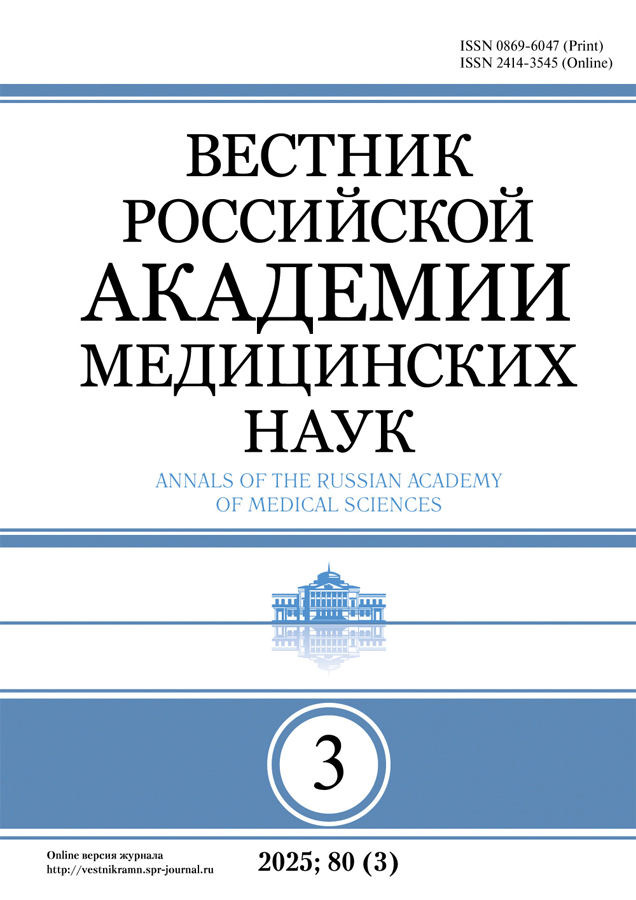SURGICAL TREATMENT OF ISOLATED ASEPTIC ACETABULAR LOOSENING IN PATIENTS WITH STABLE FEMORAL COMPONENT
- Authors: Markov D.A.1, Zvereva K.P.1, Sertakova A.V.1, Belonogov V.N.1, Troshkin A.Y.1
-
Affiliations:
- Saratov State Medical University named after V.I. Razumovsky
- Issue: Vol 73, No 3 (2018)
- Pages: 164-171
- Section: TRAUMATOLOGY: CURRENT ISSUES
- Published: 14.06.2018
- URL: https://vestnikramn.spr-journal.ru/jour/article/view/974
- DOI: https://doi.org/10.15690/vramn974
- ID: 974
Cite item
Full Text
Abstract
Background: Aseptic acetabular loosening currently occupies the 1st place in the structure of delayed complications after total hip arthroplasty. The basis of treatment is the replacement of a loosening cup and a pair of friction. The tactics of surgical treatment of the stable correctly oriented femoral component have not been determined, thoroughly which confirms the relevance of the study.
Aims: Compare the effectiveness of total hip revision and isolated acetabular revision in patients with aseptic acetabular loosening and stable correctly oriented femoral component.
Materials and methods: The study presented the results of surgical treatment performed in 44 patients (45 revisions) with isolated aseptic acetabular loosening and stable correctly oriented femoral component were presented, Patients were divided into two groups depending on the severity of surgery. The first group included 16 patients with a total revision due to irregular cone of the stem. The second group included 28 patients (29 revisions) with an isolated replacement of the unstable cup and a pair of friction.
Results: In the 1st group, revision surgery was performed to replace both cup with the friction pair and stable correctly oriented stem which finally results in lower postoperative red blood counts (erythrocytes, hemoglobin, hematocrit), as well as higher intraoperative blood loss volume and longer duration of surgical intervention if compare to the 2nd group where the stable correctly oriented femoral component was not changed. Postoperative results assessed using Harris scales and Oxford Hip Score in the comparison group were at a higher level during the whole period of follow-up. A moderate coorelation between the severity of the revision intervention and its results was detected.
Conclusions: Preservation of a stable correctly oriented stem allows to reduce the severity of the revision intervention which improves the results and shortens the period of patient rehabilitation.
About the authors
D. A. Markov
Saratov State Medical University named after V.I. Razumovsky
Email: m-makar@yandex.ru
ORCID iD: 0000-0002-1753-248X
Dmitrii A. Markov - MD, PhD
Russian FederationK. P. Zvereva
Saratov State Medical University named after V.I. Razumovsky
Author for correspondence.
Email: ksenya.zvereva.91@mail.ru
ORCID iD: 0000-0003-3494-2277
KseniiaP. Zvereva - MD
Russian FederationA. V. Sertakova
Saratov State Medical University named after V.I. Razumovsky
Email: anastasiya-sertakova@yandex.ru
ORCID iD: 0000-0002-4375-0405
Anastasiia V. Sertakova - MD, PhD
Russian FederationV. N. Belonogov
Saratov State Medical University named after V.I. Razumovsky
Email: sarniito@yandex.ru
ORCID iD: 0000-0003-0896-3525
Valerii N. Belonogov - MD, PhD
Russian FederationA. Yu. Troshkin
Saratov State Medical University named after V.I. Razumovsky
Email: sarniito@yandex.ru
ORCID iD: 0000-0003-4078-7111
Alexander Yu. Troshkin
Russian FederationReferences
- cihi.ca [Internet]. Hip and Knee Replacements in Canada: Canadian Joint Replacement Registry. 2015 Annual Report [cited 2018 May 29]. Available from: https://www.cihi.ca/en/access-data-reports/results?query=Hip+and+Knee+Replacements+in+Canada%3A+Canadian+Joint+Replacement+Registry.+&Search+Submit=.
- National Joint Registry for England and Wales. 13th Annual Report. 2016. Available from: http://www.njrreports.org.uk
- The Swedish Hip Arthroplasty Register. Annual Report 2015. For year 2015. Available from: http://danskhoftealloplastikregister.dk
- He C, Feng JM, Yang QM, et al. Results of selective hip arthroplasty revision in isolated acetabular failure. J Surg Res. 2010;164(2):228–233. doi: 10.1016/j.jss.2009.06.023.
- Piolanti N, Andreani L, Parchi PD, et al. Clinical and radiological results over the medium term of isolated acetabular revision. ScientificWorldJournal. 2014;2014:148592. doi: 10.1155/2014/148592.
- de Thomasson E, Conso C, Mazel C. A well-fixed femoral stem facing a failed acetabular component: to exchange or not? A 5- to 15-year follow-up study. Orthop Traumatol Surg Res. 2012;98(1):24–29. doi: 10.1016/j.otsr.2011.08.014.
- Fukui K, Kaneuji A, Sugimori T, et al. Should the well-fixed, uncemented femoral components be revised during isolated acetabular revision? Arch Orthop Trauma Surg. 2011;131(4):481–485. doi: 10.1007/s00402-010-1152-x.
- Kalra S, Kumar A, Jarhyan P, Unnikrishnan AG. Endemic or epidemic? Measuring the endemicity index of diabetes. Indian J Endocrinol Metab. 2015;19(1):5–7. doi: 10.4103/2230-8210.144633.
- Makela KT, Matilainen M, Pulkkinen P, et al. Countrywise results of total hip replacement. An analysis of 438,733 hips based on the Nordic Arthroplasty Register Association database. Acta Orthop. 2014;85(2):107–116. doi: 10.3109/17453674.2014.893498.
- Gu Q, Shi Q, Yang H. The role of TLR and chemokine in wear particle-induced aseptic loosening. J Biomed Biotechnol. 2012;2012:596870. doi: 10.1155/2012/596870.
- Waewsawangwong W, Ruchiwit P, Huddleston J, Goodman S. Hip arthroplasty for treatment of advanced osteonecrosis: comprehensive review of implant options, outcomes and complications. Orthop Res Rev. 2016;8:13–29. doi: 10.2147/Orr.S35547.
- Акулич Ю.В., Подгаец Р.М., Скрябин В.Л., Сотин А.В. Исследование напряженно-деформированного состояния эндопротезированного тазобедренного сустава // Российский журнал биомеханики. ― 2007. ― Т.11. ― №4 ― С. 9–35.
- Hara K, Kaku N, Tabata T, et al. Isolated acetabular revision for failed bipolar hemiarthroplasty without removal of a well-fixed femoral component. Orthopaedic Proceedings. 2013;95-B(15):191.
- Lawless BM, Healy WL, Sharma S, Iorio R. Outcomes of isolated acetabular revision. Clin Orthop Relat Res. 2010;468(2):472–479. doi: 10.1007/s11999-009-1104-3.
- Kerboull L. Selecting the surgical approach for revision total hip arthroplasty. Orthop Traumatol Surg Res. 2015;101(1 Suppl):S171–178. doi: 10.1016/j.otsr.2014.07.031.
- Park YS, Moon YW, Lim BH, et al. A comparative study of the posterolateral and anterolateral approaches for isolated acetabular revision. Arch Orthop Trauma Surg. 2011;131(7):1021–1026. doi: 10.1007/s00402-011-1258-9.
Supplementary files








